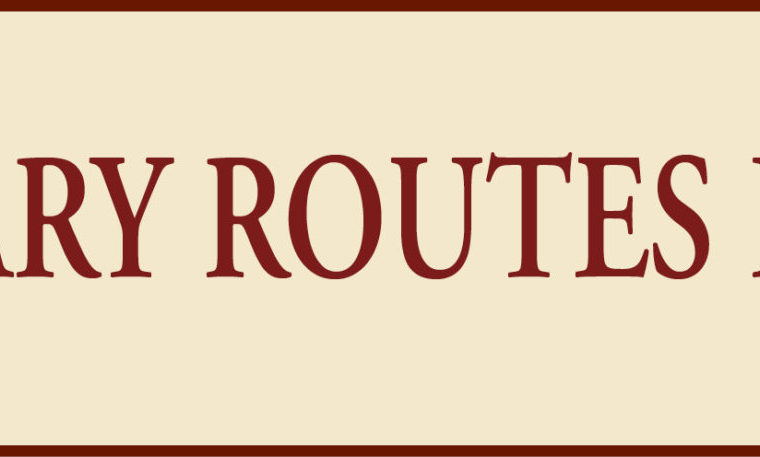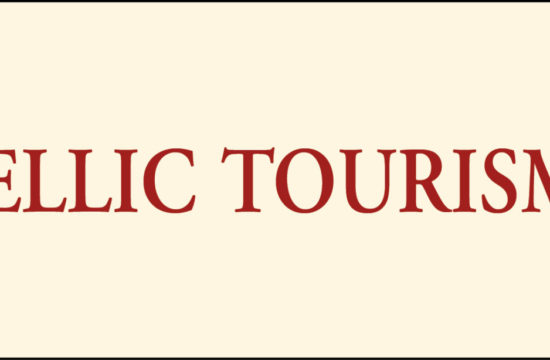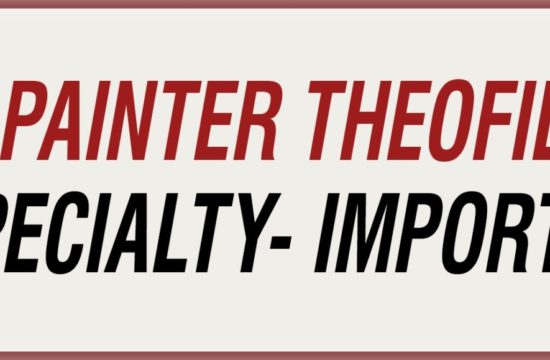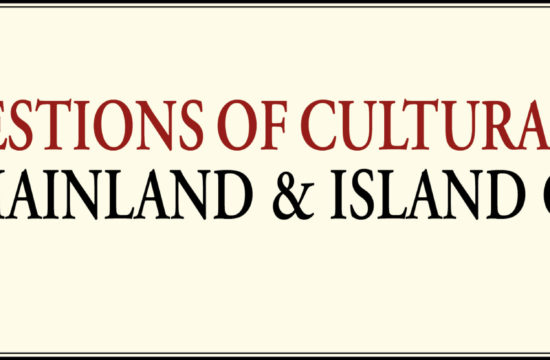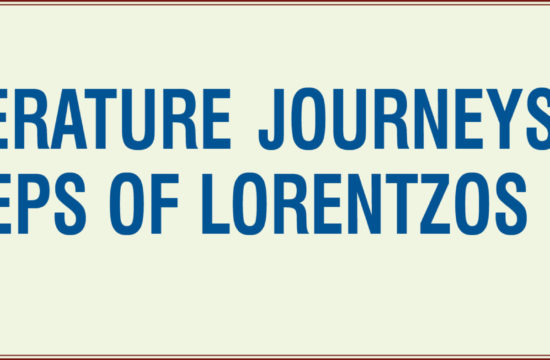Manioy Fotini (fvtinimaniou@yahoo.gr).,National and Kapodistrian University of Athens (NKUA), Master from the University of Aegian.
Varonou Eleftheria (tour312017035@uniwa.gr) Undergraduate Student – University of West Attica.Department of Tour
“Art is necessary in order that man should be able to recognize and change the world. But art is also necessary by virtue of the magic inherent in it.”—Ernst Fischer, The Necessity of Art (1963:17)
Abstract
This article aims to explore the bonds between tourism and travels with arts and literacy. In the following paper, we are going to witness how artists were able to lure readers from all over the world to places that had some significance for a piece of art they brought to life , even if the artists had no intention of doing so. A phenomenon that appears to be, around the time of the Grand Tour. Especially William Shakespeare[1] has had a meaningful contribution to the touristic development of Veneto, for the way his stories were brought to life.
Keywords: literacy, literature, literary routes, tourism, arts, books, William Shakespeare, Romeo & Juliette, Italy, Veneto, Verona, Padua
Arts have always been a very important factor in human evolution. Humans had been using different kinds of arts in order to express their thoughts and ideas with the rest of their community, with or without words. It’s no surprise that in Greek, the word art is translated as τέχνη (techni), which according to Tergopulos and Fitrakis[2] is originated from the word τίκτω (tikto), that means ‘to give birth’
The most common way of putting our thoughts into actual words is naturally writing. As a result of that, around the second half of the 15th century, defined as ‘Literacy’, an artistic phenomenon appeared and it was named after the latin word ‘literra’ which translates to ‘alphabet’.
Thanks to Literacy, readers had the chance of travelling around the world, just by reading through book pages. Others took it a step further and decided to experience those cities they had read so much about in flash and bones, and so around the 19th century, Cultural Tourism was born. The readers became travelers whose aim was to explore the cities that hosted their stories, the hometowns of their favourite authors and even their tombs, that now stand as museums or monuments[3].
Soon enough the new travelers had the pleasure of losing themselves in a magic world that had popped out right from their books.
A lot of locations were welcoming new visitors as they became new touristic attractions throughout books that rose to fame. Classic examples of such cases are the city of London, which became very famous after the Harry Potter[4] novels and Transilvania, after the famous book by Bram Stoker, ‘Dracula’[5]. A lot of these cities, of course, took good advantage of their spot under the spotlight and developed monuments, museums or even parks, dedicated to the cause, which was the need of the tourist to feel as if they were walking in the shoes of the authors or heros.
According to the United Nations World Tourism Organization (UNWTO), Cultural Tourism is defined as ‘A type of tourism activity in which the visitor’s essential motivation is to learn, discover, experience and consume the tangible and intangible cultural attractions/products in a tourism destination’[6]
Research done by UNWTO, showed that Cultural Tourism is the first choice of traveling cause along the travelers, taking over 40% of the touristic product. Along those cities of interest, lay lots of cities of Italy. Veneto has notably been an influence in many works of literacy.
Veneto is a gorgeous state in Northern Italy with elegant culture, which is thriving as a Touristic Destination among others. Veneto is the most visited state in Italy, with almost 75,9% of Italian tourism visiting Veneto’s big cities, Venice, Verona and Padua. Also Veneto has fairly claimed its spot in the Top 10 Destinations in Europe[7].
Venora, built in the 19th century, is one of the biggest cities of Northern Italy. The city has managed to preserve many of its ancient monuments which take us back in time, until the Renaissance. Many of them have even been included in the UNESCO World Heritage. Verona embraces about 660,000 visitors every year, with an average stay of 2,25 days. The influence of those travels of course has been the famous House Of Juliet.
Verona has been a great sway on William Shakespeare’s novel, Romeo & Juliet. The famous and love story took place in the streets of Verona and later on, the city became a very popular destination as many readers longed to walk through the same routes as described by the British writer and also visit the House Of Juliet[8].
The House of Juliet with the very signature Balcony stands among the streets of the town, as an open Museum, welcoming thousands of visitors every day. From letters, murals, 16th century furniture, books, and various events, the visitor will surely leave the Museum both surprised and excited by this tour. It’s worth mentioning that it’s also believed that the house itself belonged to the real Capulet family. In 1968, the Italian Film Director, Franco Zeffirelli used the house for the making of his film of the same name. Till this day, the visitor can admire even the costumes of the actors of the film. It’s also necessary to take pictures with Juliet’s statue that is believed to bring good luck.
Padua is the eldest city of Verona and it attracts around 1,8 million tourists annually. Padua is very well known for the Tomb of Antenor, a Troyan Warrior and Founder of the city. Antenor is also widely known from the Greek mythology and he’s played an important role, as he consulted the Troyans to return Helen back to Greece and her husband, something that had it been done, it would have prevented the two nations from going on a war. A war that made history. Nevertheless, William Shakespeare’s influence on the tourism of Padua is obvious since the city has come again under the spotlight after his comedy book ‘The Taming of the Shrew’[9].
Venice of course couldn’t be missing from the Shakespearean era. Despite the fact that the British author had never been to Italy himself, in his book ‘The Merchant of Venice’ he lets his imagination go wild and Shakespeare presents Venice and the Venetian Ghetto in such detail of note. Today Shakespreare’s readers view the Venetian Ghetto as a Venetian Touristic Highlight, as well as the Doge’s Palace, which played a crucial part in the story, is now a museum[10].
Another destination for the Cultural Tourists is of course the Marciana Library. A Library built in the 16th century by architects Jacopo d’Antonio Sansovino and (after Sansovino’s death) Vincenzo Scamozzi. The High Renaissance building currently holds over 1,200 original Vizantians handwritten papers, books and letters written by Cardinal Bessarion as well as writings of literature, inspired by the Greek and Italian cultures. Thousands of tourists and history lovers come across the world for this Monument since it’s widely known for its priceless collections.
Conclusion
To sum up, it’s fair to say that arts have had a huge impact on humanity. Throughout the years, with the evolution of education and cultural awakening, as well as travelling becoming more accessible, the travelers today have come to seek art everywhere they go! Books, as well as all forms of arts, can have a grand impact on the way we view the world around us and how much of it, or which parts of it, we choose to explore. Artists have played a very defining role in that, since through their work, they were able to share their very own experiences with the others, who later on got inspired to go on their own adventures. At the very end of the day, those experiences are what life is made of, and art is made of life.
References
- Abulafia, D. (2004) Short Oxford History of Italy: Italy in the Central Middle Ages, Oxford University Press
- Fischer, E.(1963) The Necessity of Art
- Manola, M.( 2019) ,LITERATURE, TOURISM , CULTURE , Tsotras Editions , Athens ( In Greek)
- Manola. M, (2020), Literary Tourism as a Phenomenon – Examples in Greece & Italy. [Electronic] Available at: Online day. 27 / 11.INTEREEG GREECE ITALY.POLYSEMI. https://bit.ly/3746TZT [Accessed 27 November 2020].
- Manola, M.& Koltsikoglou, G. (2020). “CULTURAL EXPERIENTIAL WINE ROUTES IN ITALY-TUSCANY”, SDCT-Journal). Volume 1/2020.
- Manola. Μ, Balerbas, A., & Kuni, S. (2020). Veneto’s Experiential Approach through books – From Travel Literature to Literature Tourism. International Review of Social Sciences G ISSN: 2309-0081 Vol. 8, No.9.
- Manola, M., & Balermpas, A. (2020). Souvenirs: Their Role In Tourism Industry, Cultural Heritage And Their Utilization In Experiential Teaching. Archives of Business Research, 8(9). 1-10.
- Light Duncan 2007. “Dracula tourism in Romania: Cultural Identity and the State.” Annals of Tourism Research 34 746–765.
- Richards, G.(2018), Cultural Tourism: A review of recent research and trends. Journal of Hospitality and Tourism Management, 36, 12-21. 1447-6770
- Tegopoulos and Fitrakis (1988),Mizon Elliniko Lexiko
Websites
- Antenor’s Grave Available at : Ο τάφος του Αντήνορα [Cited December 12, 2020]
- Doge’s Palace Museum. Available At: Doge’s Palace – Useful Information [Cited December 18, 2020]
- Home of Juliet. Available At: Casa di Giulietta – Home page | Mobile Version [Cited December 7, 2020]
- How the tourism industry is evolving. Available At: How the tourism industry is evolving [Cited December 7, 2020]
- Statuto Veneto http://www.consiglioveneto.it/crvportal/upload_crv/statuto/statuto_precedente.pdf [Cited December 5, 2020]
- , “Shakespeare’s Italy: Cities that inspired the most famous plays”, Available at: https://www.traveller.com.au/shakespeares-italy-rome-padua-venice–where-the-bard- set-some-of-his-most-famous-works-govx36, last accessed: 13/12/2020 [Cited December 20, 2020]
- Veneto in Figures 2007 -2008, Vendemiano Sartor Counselor for economic, development, research and innovation policies. Available At: https://web.archive.org/web/20090601203957/http://statistica.regione.veneto.it/Pubblicazioni/VenetoInCifre/2007-2008/index.jsp [Cited December 20, 2020]
- Vivian Ho, 2009 https://www.huffpost.com/entry/harry-potter-now-uks-top_n_236201?guccounter=1 [Cited December 20, 2020]
[1] British Author, (1564 – 1616 )
[2] (Greek Dictionary, 1988)
[3] (Richards 2001; Barton 2005)
[4] Vivian Ho, 2009
[5] Duncan Light, 2007
[6] Definition adopted during the 22nd Session of the General Assembly held in Chengdu, China (11–16 September 2017)
[7] Veneto is the most visited http://www.italian-lawyer.eu/veneto-tourism
[8] Casa di Giulietta – Home page | Mobile Version
[9] Traveler (2016)
[10] Doge’s Palace – Useful Information: https://www.venice-museum.com/doge-palace.php

